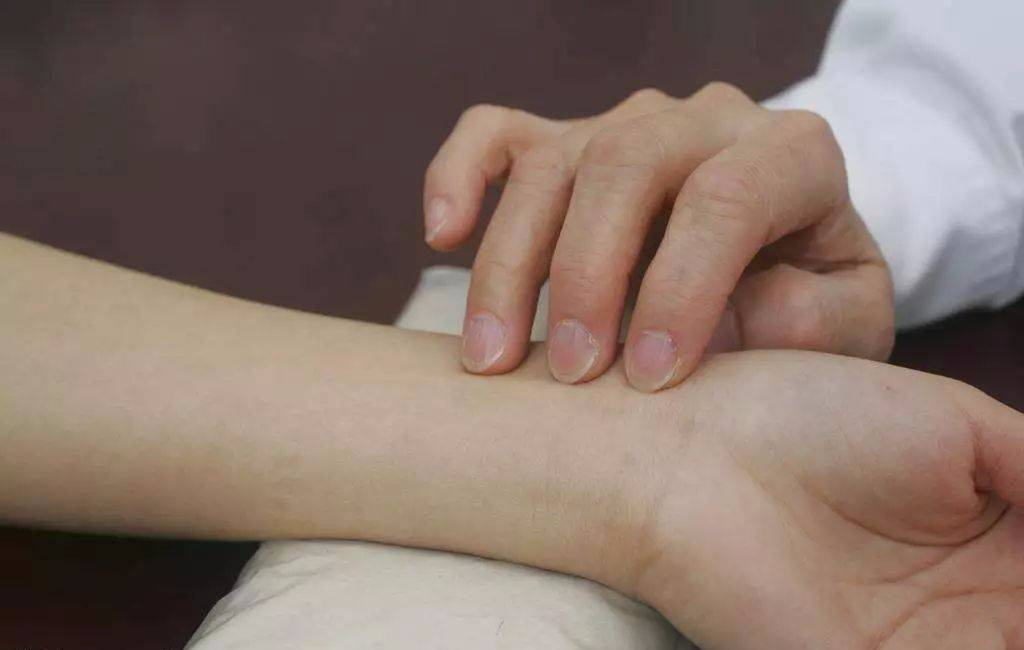
Many people praise the treatment methods of Traditional Chinese Medicine (TCM), which actually rely on quick and accurate diagnostic techniques. So, how does TCM diagnose diseases? The answer lies in pulse diagnosis, also known as qiè mài (切脉), which involves gently pressing the patient’s arteries to determine their condition based on the pulse quality.
The Principle of Pulse Diagnosis

As early as the 5th century BC, examples of pulse diagnosis appeared in China, and this practice has continued to this day, demonstrating the enduring vitality of TCM pulse diagnosis and its significant scientific basis.
Modern research on pulse quality confirms that its formation primarily depends on the function of the heart, the condition of the blood vessels, and the quality and quantity of blood.
These three aspects determine the changes in the pulse’s characteristics, which reflect the underlying conditions. The pulse can first indicate changes in these three factors and can also be used to infer other pathological changes. Clearly, the pulse has objective factors that exist.
The heart is the driving organ for pulse formation, so the pulse primarily reflects heart conditions. For instance, coronary heart disease, poor blood supply to the heart, and heart failure can all be reflected in the pulse. When coronary heart disease occurs, the heart may experience pauses, which can be detected through the pulse.
The contraction and relaxation of blood vessels reflect changes in the quality, quantity, and speed of blood flow. Additionally, blood vessels themselves can have pathological changes, such as arteriosclerosis, which can also be diagnosed through pulse examination.
How TCM Performs Pulse Diagnosis

First, the practitioner locates the pulse’s position. Some pulses can be felt with a light touch, while others require more pressure, distinguishing between fú mài (浮脉, floating pulse) and chén mài (沉脉, deep pulse).
The second aspect is the pulse’s strength. A strong pulse is termed shí mài (实脉, full pulse), while a weak pulse is referred to as xū mài (虚脉, empty pulse).
The third aspect is the pulse’s frequency. In a healthy person, the pulse should beat four times with each breath. Fewer than four beats indicate a chí mài (迟脉, slow pulse), while more than five but fewer than seven beats indicate a shù mài (数脉, rapid pulse).
The fourth aspect is the pulse’s tension. If pressed, it feels tight like a string, termed xián mài (弦脉, wiry pulse). If it feels relaxed and soft, it is termed huǎn mài (缓脉, slow pulse).
The fifth aspect is the pulse’s regularity. The rhythm should be consistent, with uniform strength and size. Irregular rhythms may indicate cè mài (促脉, hurried pulse), jié mài (结脉, knotted pulse), or dài mài (代脉, intermittent pulse), while uneven strength and size may indicate wēi mài (微脉, faint pulse) or sàn mài (散脉, scattered pulse).
The sixth aspect is the pulse’s smoothness, which refers to the fluidity of the pulse. A smooth pulse is termed huá mài (滑脉, slippery pulse), while a rough pulse is termed shè mài (涩脉, choppy pulse).
The seventh aspect is the pulse’s length, which refers to the range of the pulse that can be felt by the fingers, categorized as cháng mài (长脉, long pulse) and duǎn mài (短脉, short pulse).
The eighth aspect is the pulse’s width, which refers to the radial range of the pulse that can be felt by the fingers, categorized as dà mài (大脉, wide pulse) and xì mài (细脉, thin pulse).
Common Pulse Qualities

A healthy pulse should beat four times with each breath, with pulses present in the cùn (寸), guān (关), and chǐ (尺) positions. The pulse should not be floating or deep, but rather gentle and strong, with the chǐ mài (尺脉, wrist pulse) being strong when pressed. Common pathological pulses include fú mài (浮脉, floating pulse), chén mài (沉脉, deep pulse), chí mài (迟脉, slow pulse), shù mài (数脉, rapid pulse), xū mài (虚脉, empty pulse), shí mài (实脉, full pulse), huá mài (滑脉, slippery pulse), hóng mài (洪脉, surging pulse), xì mài (细脉, thin pulse), and xián mài (弦脉, wiry pulse).
Floating Pulse: Can be felt with light pressure, but diminishes with heavy pressure; it is associated with Yang and the exterior. Characterized by a superficial pulse.
Deep Pulse: Cannot be felt with light pressure, but can be felt with heavy pressure; it is associated with Yin and the interior. Characterized by a deep pulse that requires pressing below the muscle.
Slow Pulse: A slow pulse, with three or two beats per breath (less than 60 beats per minute). Associated with cold conditions. A strong slow pulse indicates real cold, while a weak slow pulse indicates false cold. Cold causes stagnation, slowing the flow of Qi and blood, resulting in a slow but strong pulse for real cold conditions. A deficiency of Yang Qi leads to a weak pulse for false cold conditions. Athletes and heavy laborers often have slow pulses as a physiological state. Jié mài (结脉): A slow pulse with irregular pauses.
Slow and Intermittent Pulse: A pulse that pauses in the middle, unable to return to its original rhythm, indicating Qi exhaustion or obstruction in the meridians; it is not harmful in pregnant women. The pulse has a defined number of pauses.
Slow with Irregular Pauses: A slow pulse with irregular pauses.
Rapid Pulse: A rapid pulse, with five or six beats per breath (more than 90 beats per minute). Characterized by a pulse that is faster than normal, except for slow, knotted, and intermittent pulses.
Empty Pulse: Weak pulses in all three positions. A strong pulse indicates emptiness. The pulse feels soft and is a general term for all weak pulses.
Full Pulse: Strong pulses in all three positions. Associated with excess conditions: strong pathogenic Qi and sufficient Zheng Qi, where the Zheng and Xie Qi are in conflict, leading to a strong pulse.
Slippery Pulse: A pulse that feels smooth and flows easily, like pressing a marble.
Surging Pulse: A large and strong pulse, like surging waves, with a strong incoming and weak outgoing pulse.
Thin Pulse: A pulse that feels thin like a thread, with distinct rises and falls.
Wiry Pulse: A straight and long pulse, firm under the fingers, like pressing a guitar string.
Through the detailed introduction of the principles of pulse diagnosis, methods of pulse examination, common pulse qualities, and how TCM performs pulse diagnosis, everyone should now have a better understanding of why TCM pulse diagnosis is so quick and accurate. Many techniques in TCM are derived from practical experience, allowing for rapid and precise diagnosis.


